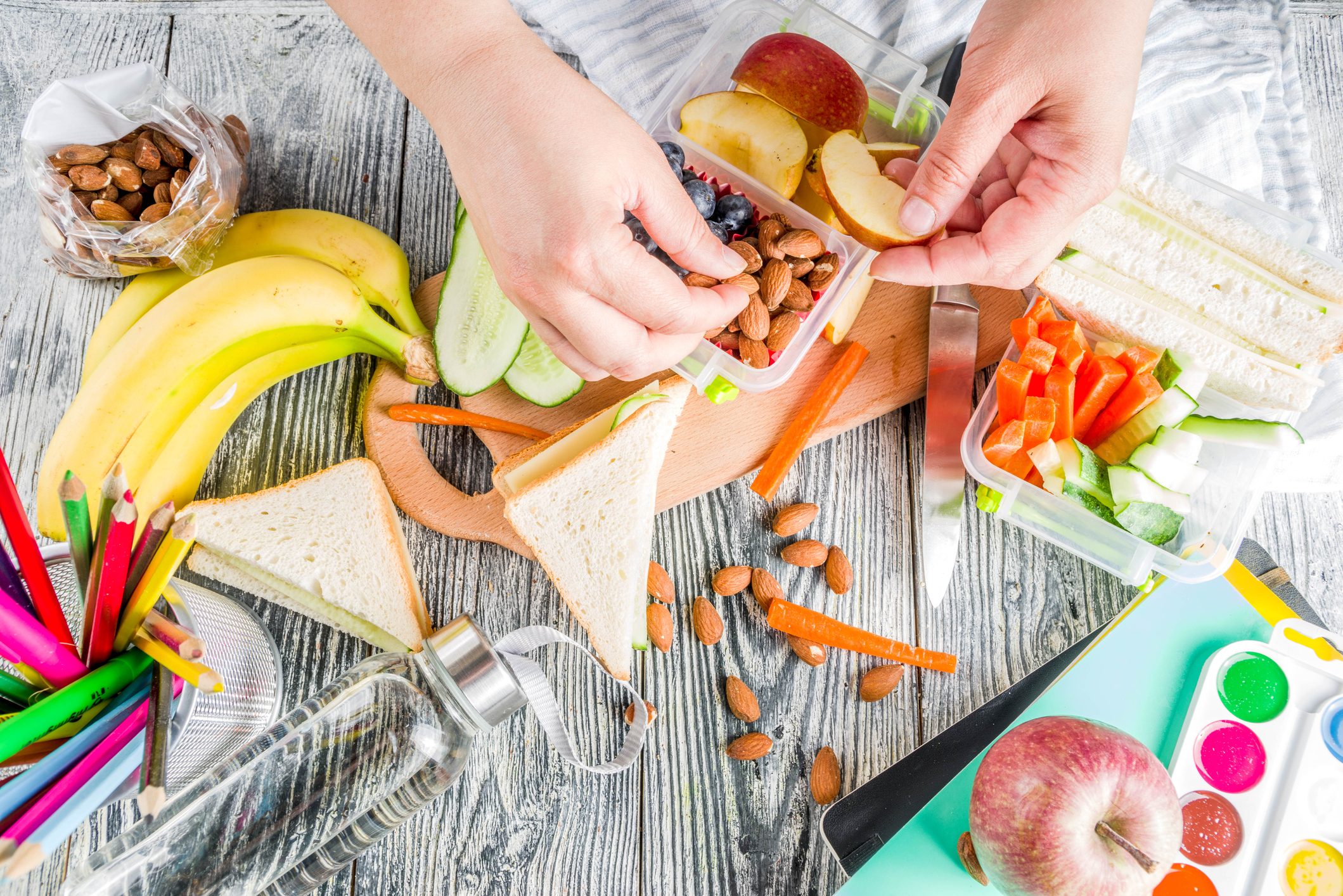Nutrition in Childhood
As a mother of a toddler and a pediatrician at heart, I know firsthand that it can be very challenging to get your child to eat a healthy diet. Whether you have a toddler or a teen, nutrition is important to his or her physical and mental development. Here are what children need no matter what their age.
Toddlers & Preschoolers

Toddlers and preschoolers grow in spurts and their appetites come and go in spurts, so they may eat a whole lot one day and then hardly anything the next. It’s normal, and as long as you offer them a healthy selection, they will get what they need.
Calcium, the body’s building block, is needed to develop strong, healthy bones and teeth.
Children may not believe or care that milk “does a body good,” but it is the best source of much-needed calcium.
There is hope for the milk-allergic, lactose- intolerant or those who just don’t like milk. Lactose-free milk, soymilk, tofu, sardines and calcium-fortified orange juices, cereals, waffles and oatmeal are some calcium-filled options. In some cases, pediatricians may recommend calcium supplements.
Fiber is another important focus. Toddlers start to say “no” more and preschoolers can be especially opinionated about what they eat. The kids may want to stick to the bland, beige, starchy diet (think chicken nuggets, fries, macaroni), but this is really the time to encourage fruits, vegetables, whole grains, and beans, which all provide fiber. Not only does fiber prevent heart disease and other conditions, but it also helps aid digestion and prevents constipation, something you and your child will be thankful for.
Grade Schoolers
It isn’t uncommon for a 6- or 7-year-old to suddenly decide to be a vegetarian once they understand animals and where food comes from. This doesn’t mean your child won’t get enough protein; animal tissue isn’t the only place we get protein. Rice, beans, eggs, milk, and peanut butter all have protein. So whether your child goes “no-meat” for a week or for life, he or she will likely still get sufficient amounts of protein.
Sugars, fats, and sodium may be areas of excess in your child’s diet.
This is a time when kids first go to school and have more independent choices in what they eat, especially if they’re getting it in the cafeteria themselves. Cakes, candy, chips and other snacks might become lunchtime staples.
The body needs carbs (sugars), fats and sodium, but these should be eaten in moderation. Too much can lead to unneeded weight gain and other health problems.
Packing your child’s lunch or going over the lunch menu and encouraging him or her to select healthier choices can help keep things on track.
Preteens & Teens
As puberty kicks in, young people need more calories to support the many changes they will experience. Unfortunately, for some, those extra calories come from fast food or “junk” foods with little nutritional value.
Some adolescents go the opposite way and restrict calories, fats or carbs. Adolescence is the time kids start to become conscious of their weight and body image, which, for some, can lead to eating disorders or other unhealthy behaviors. Parents should be aware of changes in their child’s eating patterns and make family dinners a priority at least once or twice a week.
Like calories, calcium requirements are higher. Calcium is more important than ever during the tween and teen years because the majority of bone mass is built during this time. Encouraging kids to have milk, milk products or calcium-rich alternatives, should help them get more calcium.
Your child’s gender may play a role in whether he or she needs more of a particular nutrient. For instance, teen girls need more iron than their male counterparts to replace what’s lost during menstruation, and males need slightly more protein than girls.
Water: Drink Up!
Water makes up more than half of kids’ body weight and is needed to keep all parts of the body functioning properly.
There’s no specific amount of water recommended for children, but it’s a good idea to give them water throughout the day – not just when they’re thirsty.
If your child doesn’t like the taste of water, add a bit of lemon or lime for flavor. Fruits and veggies are also good sources of water.
Kids should drink more water when ill, when it’s hot outside or when engaged in physical activity.
Variety
Your child should consume a variety of foods from the five major food groups. Each food group supplies important nutrients, including vitamins and minerals.
These five groups and typical minimum servings are:
Vegetables: 3-5 servings per day. A serving may consist of 1 cup of raw leafy vegetables, 3/4 cup of vegetable juice or 1/2 cup of other vegetables, chopped raw or cooked.
Fruits: 2-4 servings per day. A serving may consist of 1/2 cup of slides fruit, 3/4 cup of fruit juice or a medium-size whole fruit, such as an apple, banana or pear.
Bread, cereal or pasta: 6-11 servings per day. Each serving should equal 1 slice of bread, 1/2 cup of rice or pasta or one ounce of cereal.
Protein foods: 2-3 servings of 2-3 ounces of cooked lean meat, poultry or fish per day. Additionally, a serving in this group may consist of 1/2 cup of cooked dry beans, 1 egg or 2 tablespoons of peanut butter for each ounce of lean meat.
Dairy products: 2-3 servings per day of 1 cup of low-fat milk or yogurt or 1 1/2 ounces of natural cheese.
Although getting your child to eat healthy – regardless of his or her age – can be a constant battle, its one well worth fighting. A healthy child becomes a healthy adult, and only with your support and guidance will you child be both.
For more information on these and other topics, visit www.healthychildren.org. This is a great resource designed by the American Academy of Pediatrics specifically for parents.
Should a situation arise in which your child needs to be admitted to a hospital, remember Hendricks Regional Health is home to Hendricks County’s only designated pediatric unit, specially designed to treat children. Our experienced staff is available 24/7 to care for all ages from birth to 18 years.




